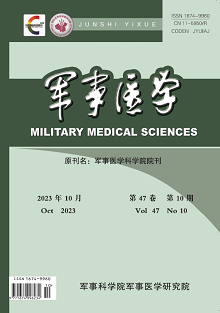Original articles
YU Xiaohan, LI Jing, FAN Lijie, LI Yan, CHENG Wenqin
Objective To examine the impact of low-intensity laser therapy on bone metabolism, oxidative stress levels, and inflammatory factors in veterans diagnosed with osteoporosis. Methods A total of 234 veterans with osteoporosis, who were admitted to our hospital between June 2017 and June 2022, were randomly assigned to two groups: the Simple Treatment Group (STG) and the Laser Adjuvant Treatment Group (ATG). Each group consisted of 117 patients. The STG received standard drug treatment, while the ATG received low-intensity laser intervention in addition to the standard drug treatment. The following parameters were monitored and compared between the two groups: bone density, pain score, bone metabolism indicators [including osteocalcin(BGP), bone specific alkaline phosphatase (B-ALP), and type Ⅰ collagen carboxy terminal peptide (CTX)], oxidative stress indexes [including superoxide dismutase (SOD) and advanced oxidation protein product (AOPP)], and inflammatory factors [including tumor necrosis factor-α (TNF-α), insulin-like growth factor 1(IGF-1), and interleukin-6 (IL-6)]. The therapeutic efficacy of low-intensity laser in the treatment of osteoporosis was assessed by comparing the aforementioned indicators between the two groups. Results After treatment, both groups experienced an increase in bone density at the lumbar spine L2-4 and femoral neck. However, the ATG demonstrated significantly higher index values compared to the STG (t=-1.245, 12.376, P<; 0.001). After treatment, both groups exhibited a significant reduction in pain scores. Notably, the ATG demonstrated a more substantial decrease in pain scores compared to the STG (t=-3.953, P<; 0.001). After treatment, the levels of BGP increased, while B-ALP and CTX decreased in both groups. However, the ATG exhibited higher levels of BGP and lower levels of B-ALP and CTX(t=15.945, -17.992, -8.886, P<; 0.001). After treatment, both groups experienced decreased levels of TNF-α and IL-6 and increased levels of IGF-1. However, the ATG demonstrated lower levels of TNF-α and IL-6 and higher levels of IGF-1 compared to the STG (t=-20.165, -19.844, 13.403, P<; 0.05). Conclusion In conclusion, low intensity laser assisted therapy demonstrates a greater degree of improvement in various aspects such as bone density, pain, bone metabolism, oxidative stress, and inflammatory factors, when compared to traditional treatment regimens. These promising results highlight the potential of this therapy for clinical application in veterans with osteoporosis.
